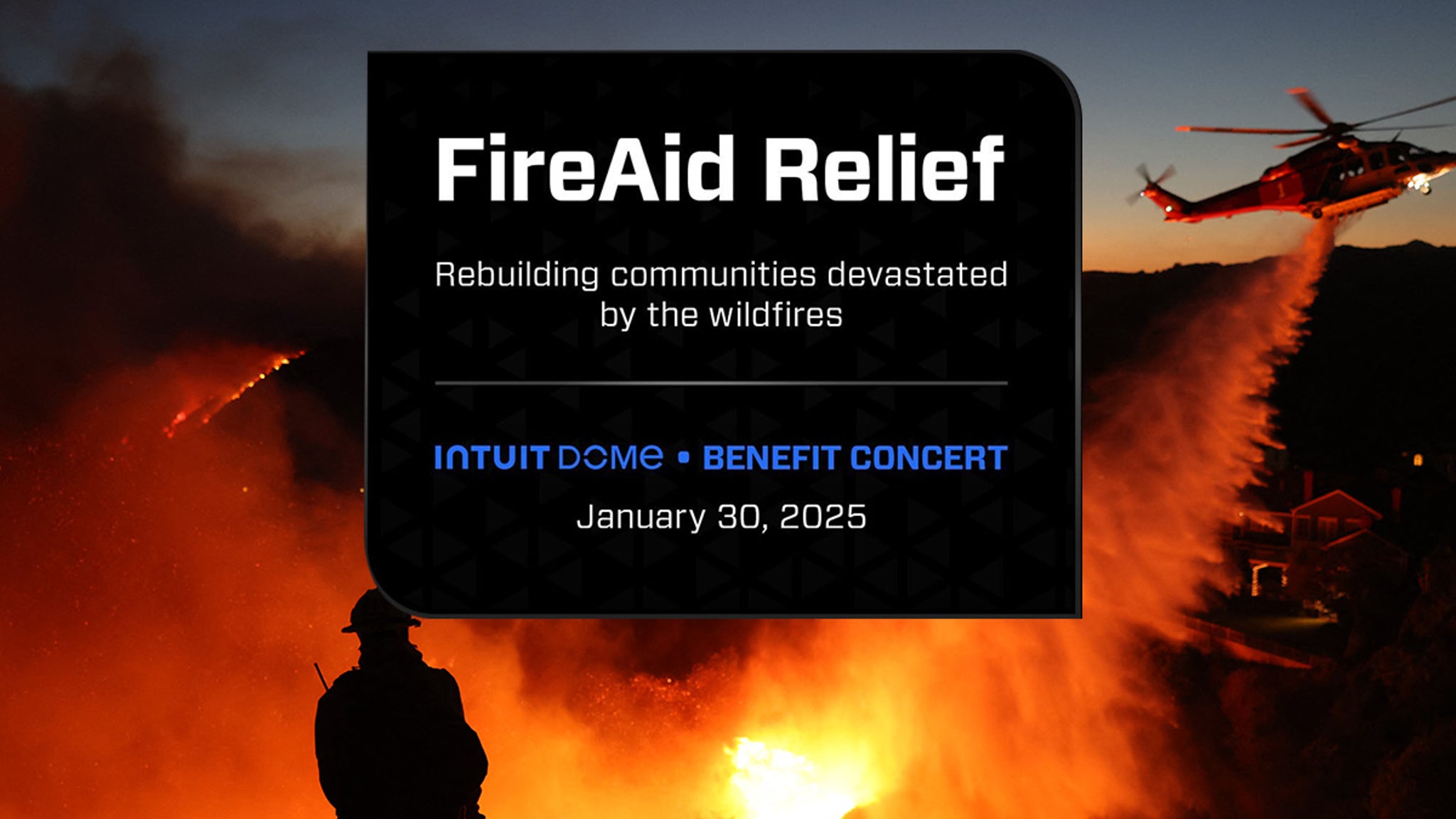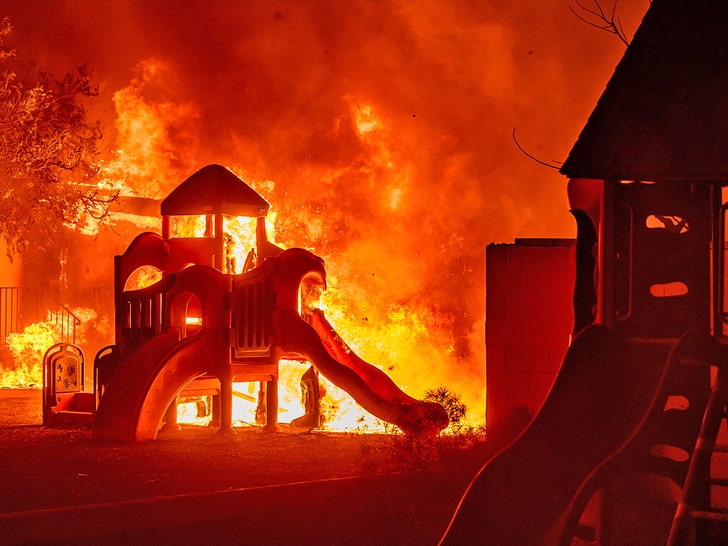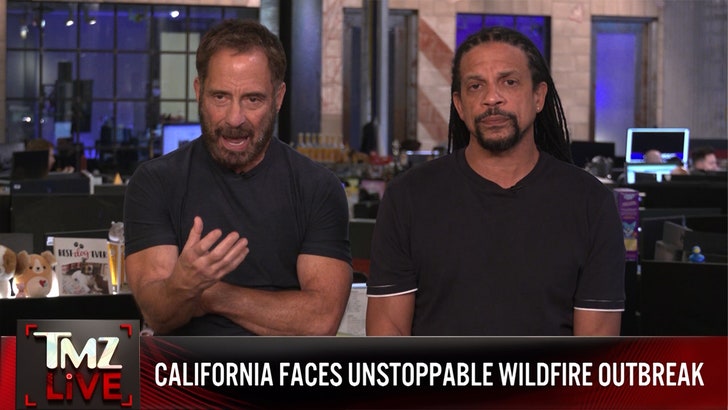Lifestyle
One restaurant has a way to fight food waste: Making food out of 'trash'

Kayla Abe (pictured here) and her partner, chef David Murphy, co-founded Shuggie’s Trash Pie in 2022, in part to address the global problem of food waste. According to the food waste reduction nonprofit ReFED, 38% of the U.S. food supply goes uneaten.
Ryan Kellman/NPR
hide caption
toggle caption
Ryan Kellman/NPR
Climate change is affecting our food, and our food is affecting the climate. NPR is dedicating a week to stories and conversations about the search for solutions.
No one, except maybe Sesame Street’s Oscar the Grouch, wants to consume food that most people think of as garbage.
But if everyone ate fare that might otherwise be thrown out — say, weird animal parts or milk that’s close to its sell-by date — we’d significantly reduce the impacts of human-caused climate change.
“Addressing food waste turns out to be one of the biggest climate solutions of them all,” said climate scientist Jonathan Foley, who serves as executive director of the climate solutions think tank Project Drawdown.
According to the food waste reduction nonprofit ReFED, 38% of the U.S. food supply goes uneaten.
All of the processes involved in making food, from clearing land and raising cattle to packaging and cooking ingredients, contribute to one-third of the world’s planet-warming pollution. The food waste that ends up rotting in landfills is particularly problematic.
“It causes methane to go into the atmosphere as well, and that’s a really potent greenhouse gas,” Foley said.
Methane traps more heat than carbon dioxide, which causes global warming. An estimated 60% of methane emissions are human-caused and come largely from agriculture, fossil fuels and food waste decomposing in landfills.
Restaurants are in an optimal position to help solve this problem.

David Murphy, chef and co-owner of Shuggie’s Trash Pie in San Francisco, a restaurant that focuses on imperfect and up-cycled ingredients, previously worked in high-end restaurants. “We always demanded the best. The most perfect little Brussels sprout,” he says.
Ryan Kellman/NPR
hide caption
toggle caption
Ryan Kellman/NPR
According to research from the U.S. Department of Agriculture, people are spending more on eating out in this country than they are at home, and the restaurant industry was responsible for almost 10 million tons of leftover food in 2022, according to 2022 data from ReFED.
Restaurants can make practical tweaks, like reducing or customizing portion sizes. “That’s a big one,” said Roni Neff, an associate professor at the Johns Hopkins Bloomberg School of Public Health who studies food systems and waste. “Seventy percent of the food that’s wasted in restaurants is happening after it’s served to people — on their plates.”
Neff said restaurants can also streamline their ordering processes so surplus food isn’t sitting around. And then there are the chefs.
“They can help to shape people’s views, expand our ideas of what’s good food. And they can also shift behaviors in more subtle ways,” he said.

Shuggie’s co-owners David Murphy and Kayla Abe met at a farmers market in downtown San Francisco. They were united in their desire to help local farmers who were having trouble selling their extra produce. Pictured at right, Abe and Murphy’s dog, Beef.
Ryan Kellman/NPR
hide caption
toggle caption
Ryan Kellman/NPR
That’s where restaurants like Shuggie’s Trash Pie come in.
Founded by chef David Murphy and his partner, Kayla Abe, in 2022, the San Francisco “climate solutions restaurant” works to get diners comfortable with imperfect ingredients usually discarded by the food system. According to Abe, Shuggie’s has saved 41,000 pounds of food waste from the trash can in the roughly 2 1/2 years since it opened.
“Our big goal is to change the way America’s eating,” said Abe. “And bring the idea to the mainstream that eating trash is cool.”

Shuggie’s menu features dishes made from imperfect and surplus ingredients — often sourced from local farmers who have too much of a particular produce to sell, or a produce that is past its prime. “I was constantly talking to them about their issues,” says Abe of her conversations with farmers. “And food waste was a recurring one.”
Ryan Kellman/NPR
hide caption
toggle caption
Ryan Kellman/NPR
Like a few other sustainability-focused restaurants and chains in the U.S. (e.g. Emmer & Rye Hospitality Group in Austin and San Antonio, Texas, and Lighthouse in Brooklyn, New York) Shuggie’s sources food that local producers cannot sell because there’s a surplus, it looks irregular, or it’s past its prime.
“We do not dumpster dive,” said Murphy. “That is not something that we do.”

Shuggie’s co-owner Kayla Abe gets ready for closing time. Before co-founding Shuggie’s with partner David Murphy in 2022, Kayla Abe worked for the organization that runs the farmers market at San Francisco’s Ferry Building. “The more we can grow this movement, we can actually start to make bigger change,” she says of advocating for food waste reduction as a restaurateur.
Ryan Kellman/NPR
hide caption
toggle caption
Ryan Kellman/NPR
Instead, Murphy and Abe have built strong relationships with local produce farmers, as well as fish and meat distributors.
“To look at the ugly food or the imperfect food, that it doesn’t have to be the best of everything, is a relatively new way for people to look at their food,” said Jordan Bow, the founder of the distributor Royal Hawaiian Seafood, and Shuggie’s main seafood source for oft-discarded fish parts like halibut cheeks and various types of bycatch. “I’m counting on the chefs to be creative and not just do what everybody else does.”
It’s going to take many more restaurants doing this work, as well as a broader cultural change among customers, to really make a dent in the massive food waste problem. That’s true both for eating out and eating at home. And if that shift happens, it could mean less food waste in landfills and less planet-warming pollution, which makes reducing food waste a huge climate solution.

Abe and Murphy work long hours at Shuggie’s. Prepping imperfect ingredients to restaurant standards creates additional work, and margins are tight. It can be challenging to persuade consumers to pay restaurant prices for what they perceive as waste. After closing for the night, Abe and Murphy, along with their dog Beef, sit down for a meal.
Ryan Kellman/NPR
hide caption
toggle caption
Ryan Kellman/NPR
There are simple ways to use leftover food in your refrigerator. To help you get started, NPR asked Shuggie’s chef Murphy to share some ideas. Below you’ll find three of his creative yet simple recipes that make use of commonly leftover items.
Carrot Top Chimichurri
Chef’s note: “This sauce is the base for so many of our dishes. For example, it gets incorporated into a pesto after we add cheese and nuts to it.”
Ingredients
2 cups carrot tops or beet tops, or wilting fridge greens
3 cloves garlic, minced
2 tablespoons vinegar (apple cider preferably)
1 cup extra virgin olive oil or grapeseed oil
1½ tablespoons chili flakes
salt, to taste
Method
In a blender, mix all the ingredients together on high for 30 seconds or until all the leaves have been incorporated well.
Season with salt.
So good you’ll want to use this chimi on everything!

Chef David Murphy’s Carrot Top Chimichurri sauce, showcased here on Shuggie’s Pizza Puffs.
Kayla Abe
hide caption
toggle caption
Kayla Abe
Shuggie’s Dream Beans
Chef’s note: “Use this wholesome bean dish as a dumpster for all sorts of leftovers sitting in the fridge. I’ve added squid, octopus, numerous different veggies, tired greens, fennel … anything!”
Ingredients
3 cups great northern beans, soaked, cooked in a flavorful vegetable stock. (You can sub with cannellini, gigante, or your favorite soup bean.)
½ cup chopped garlic
½ cup sundried tomatoes in oil, chopped
1 tin Spanish anchovies in oil
1 cup herb stems, chopped
4 cups tired greens (kale, collards, arugula, or any other thing left in the crisper), chopped into 1-inch pieces
1 stick dry cured Spanish chorizo, chopped into ⅛-inch cubes
4 quarts flavorful vegetable or chicken stock
3 tablespoons smoked paprika
1 teaspoon cayenne pepper
2 tablespoons black pepper
1 large yellow onion, medium dice
Method
Cook beans until tender, strain.
In another pot with a bit of grapeseed oil in the pan, cook all veggies and chorizo, deglaze with stock, add dry spices, anchovy and sundried tomato.
Add salt to taste.
Ladle into bowls, top with croutons made from day old bread, and add carrot top chimi!

Shuggie’s Dream Beans
Kayla Abe
hide caption
toggle caption
Kayla Abe
Ricotta Fluff
Chef’s note: “Throw this creamy topping on waffles, or insert it in place of mozzarella on your favorite pizza … super sexy!”
Ingredients
1 gallon milk (close to or even past its expiration date!)
¼ cup white vinegar
2 cups heavy cream
Salt to taste
Honey or other sweetener of your choice
Method
Whip heavy cream to soft peaks.
Heat milk to a simmer over low heat.
Pour in vinegar, stir gently, then strain.
Let curds cool.
Fold in heavy cream and season with salt.
Slather the mixture on toasted bread with olive oil.
Sweeten to taste.

Ricotta Fluff sits atop Shuggie’s Garlic Knots, with a dash of Carrot Top Chimi. The fluff can also be used in desserts.
Kayla Abe
hide caption
toggle caption
Kayla Abe
Audio and digital stories edited by Jennifer Vanasco and Sadie Babits. Audio story mixed by Isabella Gomez-Sarmiento.

Lifestyle
Upcoming Benefit Concert For L.A. Wildfires Gets Overwhelming Response From Artists, Bands

The upcoming benefit concert for Los Angeles wildfire victims will be exciting, engaging and will raise a ton of money … and big-name artists and bands are clamoring for a chance to help out.
TMZ has learned … there’s been an outpouring of interest from musicians who want to get involved … so much so, organizers are expanding the scope of this event.

We’re told more than 50 artists and bands have asked to participate … and right now, there are only 24 slots … though organizers are trying to add slots to accommodate the overwhelming response.
The benefit concert, dubbed FireAid, was first announced as being held at the new Intuit Dome in Inglewood, CA … but our sources say it will also be held at The Forum … which is just down the street. That’s how big this is getting.

We’re told the performances will also be live streamed.
The full lineup is still being finalized and we don’t have any names right now … but we’re told all of the performers are based in Los Angeles.

We do know Taylor Swift and Beyoncé — two of the biggest acts in music — will not be involved … but that’s fair, considering they aren’t really rooted in L.A. despite having homes here.
There’s a huge pool to draw from and this concert is going to be HUGE … and it’s going to help lots of folks who are starting from scratch.
TMZ.com

Thousands have been displaced by the Palisades and Eaton Fires and Los Angeles is now tasked with rebuilding over 12,000 structures lost in the inferno.
People lost their homes, their businesses, their cars and basically all of their possessions in the fire … and the rebuilding effort will be massive.
So too will this benefit concert.
Stay tuned!!!
Lifestyle
A Couple Kisses That Sealed the Deal

When Olivia Christine Snyder-Spak matched with Elias Jeremy Stein on Hinge in September 2021, she was a decade into online dating but had never found an ideal partner. “I had probably gone on at least a few hundred first dates, sometimes even doing two in a day,” she said.
Mr. Stein was less versed in internet matchmaking and had been on only a handful of dates over the previous year. “I wanted a serious relationship and decided to try the online route since meeting people in person during Covid was harder,” he said.
At the time, Mr. Stein, 35, was renting an apartment in Prospect Heights, Brooklyn; Ms. Snyder-Spak, 36, lived on Manhattan’s Lower East Side.
The two exchanged messages for a week about their shared love for cooking classes and art projects and exchanging funny stories. Then, Mr. Stein asked Ms. Snyder-Spak on a mini-golfing date.
When they met, in mid-September, at the Putting Green mini-golf course in Brooklyn, Mr. Stein was struck by Ms. Snyder-Spak’s energy. “She was super cute and seemed bubbly,” he said.
They played golf for an hour, chatting about their backgrounds and professions as they navigated the course. “We laughed a lot because Olivia kept hitting the ball far away from the hole,” Mr. Stein said. “The conversation was so good that I asked her for drinks afterward.”
They walked to the nearby Other Half Brewing, sat outside and continued talking over beers for the next several hours. “We were easy with each other, and it was clear we had clicked,” Mr. Stein said.
Eventually, it started to rain heavily. As they waited for their Uber rides, Mr. Stein asked Ms. Snyder-Spak if he could kiss her. “I said yes, and when he smooched me, it felt like a movie kiss,” she said, describing it as “very romantic.”
They settled into a dating cadence almost immediately, seeing each other several times a week for activities like sushi-making, comedy shows and museums. On Halloween, they went to Green-Wood Cemetery in Brooklyn. “The spookiness of a cemetery seemed fitting, and the fact that Eli felt the same way was a big sign that he was going to be a great teammate, down for whatever,” Ms. Snyder-Spak said.
A vacation to Turks and Caicos Islands in January 2022 solidified their commitment. “Our flight back got canceled because of bad weather and a staffing shortage, and the two we booked after that also got canceled,” Mr. Stein said. “We eventually ended up in Miami and got bumped on our flight home.”
Nevertheless, they had fun. “That’s when I knew that Olivia was the one.”
The experience made Ms. Snyder-Spak “realize that I wanted to do hard things together with Eli forever,” she said.
Mr. Stein grew up in Durham, N.C. He is a product manager on the software development team at Memorial Sloan Kettering in New York and the founder of Admissions Intelligence, a college admissions platform that uses artificial intelligence. He has a bachelor’s degree in international relations from Vassar College.
Ms. Snyder-Spak is from Woodbridge, Conn., and works as the director of nonfiction at the entertainment production company Topic Studios, in New York. She has a bachelor’s degree in film from Dartmouth.
After their Turks and Caicos trip, the couple began spending several nights a week at one of their two apartments. In July 2022, they began renting a place, which they’ve since bought, in Park Slope, Brooklyn.
Their bond grew as they decorated their home and traveled to places like Brazil, Portugal and Costa Rica. “My love for Olivia was getting stronger, and it was the right time to propose,” Mr. Stein said.
[Click here to binge read this week’s featured couples.]
On Dec. 13, 2023, during a nighttime picnic in Prospect Park, Mr. Stein asked Ms. Snyder-Spak to marry him as the Geminids meteor shower brightened the skies. As they kissed after she said yes, they caught a glimpse of a shooting star.
More than a year later, on Dec. 29, they wed on the front stoop of a Park Slope brownstone owned by Rabbi Yael Werber, a friend of the couple and the ceremony’s officiant. Rabbi Werber is affiliated with Congregation Beit Simchat Torah. Afterward, they walked to Mille-Feuille Bakery Cafe in Prospect Heights and indulged in three desserts.
In September, Mr. Stein and Ms. Snyder-Spak had hosted a six-day, pre-wedding celebration in Asheville, N.C., for 140 guests; it included activities such as solving a murder mystery, visiting local breweries and tubing down the French Broad River. The festivities culminated in a symbolic wedding ceremony on Sept. 1 at Yesterday Spaces, an event venue in Leicester, N.C.
“All my online dating before Eli was worth it because I found the guy I was looking for all along,” Ms. Snyder-Spak said. “I remember the hard work, but now everything feels like magic.”
Lifestyle
The Southern California fires have us on the edge of our seat. When can we finally relax?

When our city went up in flames last week, everyone I know in Los Angeles was in emergency mode. Now, as a new week begins, it’s hard to know how to feel.
For those of us living in neighborhoods not decimated by fire, the acute threat seems to have passed, at least for the moment. The skies are blueish and a light breeze is blowing as I write this. There’s ash on the ground, but less of it in the air. Most LAUSD schools have thankfully reopened. Friends and neighbors who left town are trickling back home.
And yet the National Weather Service warned of a “particularly dangerous situation” with wind gusts up to 45 to 70 mph from 4 a.m. Tuesday through 12 p.m. Wednesday for swaths of Los Angeles and Ventura counties. Additional powerful wind events are also expected throughout the week.
“We are not in the clear yet and we must not let our guard down,” Los Angeles Fire Chief Kristin Crowley said at a news conference Monday.
And so, in my house at least, the evacuation bags are still packed and waiting by the door and my phone remains in easy reach at all times. But how much longer do we have to live like this, allowing Watch Duty alerts to interrupt our sleep, poised for flight? When will we stop feeling the threat of fire hanging over our heads? Or has the threat always been there and we’re only now just seeing it?
“The reality check is there will always be events that nature throws at us that, no matter how great our technology, we can’t fight,” said Costas Synolakis, professor of civil and environmental engineering at USC. “We don’t have to live in fear, but this should give us pause about how vulnerable we are.”
A season of high risk
Fire experts say it was the deadly combination of extremely high Santa Ana winds of up to 99 mph and a city that hadn’t seen significant rain in eight months that set the stage for the two most destructive fires in L.A. history: the Palisades fire and the Eaton fire. Collectively they have burned more than 37,000 acres and killed at least 24 people.
“How a fire starts, grows and spreads has a lot to do with wind and rainfall,” said Amanda Stasiewicz, assistant professor of fire policy and management at the University of Oregon. “We had this duality of high risk from drought making things very pro-fire growth and pro-fire proliferation plus fast-moving winds that are going to carry it quickly, make it harder to suppress and challenge firefighter safety.”
The winds may have died down for now, but the dry conditions remain unchanged, making it easy for new fires to break out from a long list of sources. If the underbelly of an overheated car comes in contact with bone-dry vegetation, that can start a fire. If someone accidentally drags a chain behind their truck, unknowingly sending sparks into the air, that too can set our hills ablaze.
“As long as these drought conditions endure, having that go bag packed is not a bad idea,” Stasiewicz said. “If you have a wind event, the opportunity is there to have a fire get bigger, quicker — and larger fires are harder to contain.”
Her advice? Keep an eye on the weather forecast, paying special attention to wind advisories. “It’s a bit of keeping yourself on your toes,” she said.
This ends with rain
Despite the terrifying imagery and intense warnings, keep in mind that the high wind gusts predicted for the coming week are still significantly lower than the howling “Wizard of Oz”-like winds that blew through the city the night our two deadly fires began.
“To be clear, it looks very unlikely that we’ll see strong north winds of anywhere near the magnitude that we did in the beginning of [last] week,” said Daniel Swain, a UCLA climate scientist on a YouTube livestream on Friday.
However, he does not think L.A. is out of the woods yet when it comes to fire risk.
“Relatively strong Santa Ana winds have a cumulative effect on intense drying,” he said. “I call them atmospheric blow-dryer-like winds. The longer they blow, the dryer and more flammable the vegetation becomes.”
According to Swain, the city of L.A. will not truly be able to breathe a collective sigh of relief until we see rain.
“What we really need is an inch or two of rain to truly and finally end fire season in L.A.,” he said. “Until then, any time there are dry windy conditions, we are going to see an additional risk.”
Unfortunately, there is only a slim chance of scattered showers in the forecast for the next two weeks.
“There is a chance we may continue to see fire risk into February or even March,” Swain said.
Facing a new reality
Even with no rain in the forecast, Synolakis, who has studied people’s response to natural disasters like tsunamis, hurricanes and fires across the world, thinks it’s likely that most of us will relax our hyper-vigilant state fairly soon.
“Last week the feeling in my community in Venice was eerily similar to the first few days after 9/11 when people didn’t know if there were going to be more attacks elsewhere in the United States,” he told me. “Hearing helicopters, and seeing these giant plumes of fire increased our uncertainty. People didn’t know if the fire was going to spread all the way down here.”
But as long as the fire plumes continue to clear and evacuation orders continue to be downgraded to warnings or less, he expects people who have not been directly affected by the fires to return to a semblance of normalcy.
“If there is no new flare-up, I think by the weekend people in surrounding communities will take a deep sigh of relief,” he said.
Whether that relief is warranted, however, is worth considering. The feeling of acute threat may have passed, but climate scientists have been warning us for decades that a warming world will be accompanied by more intense weather and more intense fire.
“These fires are entirely unexpected, but this is what I keep telling people about climate change,” Synolakis said. “You are going to have more events that are unexpected, and you are not going to be able to deal with them.”
-

 Health1 week ago
Health1 week agoOzempic ‘microdosing’ is the new weight-loss trend: Should you try it?
-
/cdn.vox-cdn.com/uploads/chorus_asset/file/25822586/STK169_ZUCKERBERG_MAGA_STKS491_CVIRGINIA_A.jpg)
/cdn.vox-cdn.com/uploads/chorus_asset/file/25822586/STK169_ZUCKERBERG_MAGA_STKS491_CVIRGINIA_A.jpg) Technology6 days ago
Technology6 days agoMeta is highlighting a splintering global approach to online speech
-

 Science3 days ago
Science3 days agoMetro will offer free rides in L.A. through Sunday due to fires
-
/cdn.vox-cdn.com/uploads/chorus_asset/file/25821992/videoframe_720397.png)
/cdn.vox-cdn.com/uploads/chorus_asset/file/25821992/videoframe_720397.png) Technology7 days ago
Technology7 days agoLas Vegas police release ChatGPT logs from the suspect in the Cybertruck explosion
-

 Movie Reviews1 week ago
Movie Reviews1 week ago‘How to Make Millions Before Grandma Dies’ Review: Thai Oscar Entry Is a Disarmingly Sentimental Tear-Jerker
-

 Health1 week ago
Health1 week agoMichael J. Fox honored with Presidential Medal of Freedom for Parkinson’s research efforts
-

 Movie Reviews1 week ago
Movie Reviews1 week agoMovie Review: Millennials try to buy-in or opt-out of the “American Meltdown”
-

 News7 days ago
News7 days agoPhotos: Pacific Palisades Wildfire Engulfs Homes in an L.A. Neighborhood













